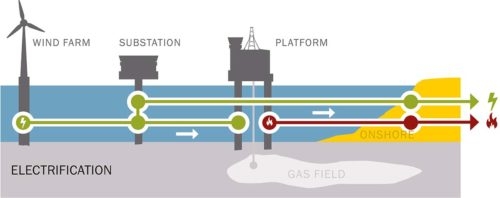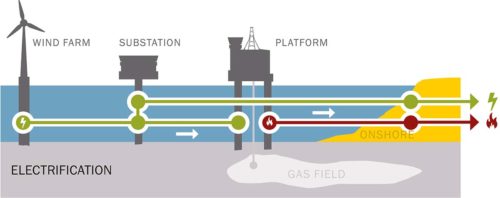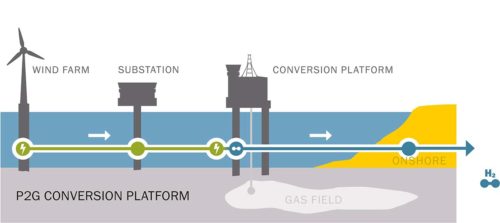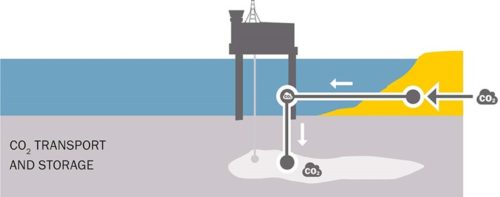New insights on offshore energy transition combining offshore wind and gas

The second phase of North Sea Energy program reports on the role of offshore platform electrification for cleaner production of natural gas as a stepping stone for offshore power-to-hydrogen and CO2 storage.
For three selected sites in the Dutch North Sea the research consortium investigated the technical, economic, environmental and regulatory perspective to discover the merits and challenges of offshore system integration.
A consortium of ECN.TNO, New Energy Coalition, Royal Haskoning DHV, University of Groningen, Loyens & Loeff, and Wageningen Marine Research concludes that there are clear merits in lining-up offshore system integration options.

The business cases for offshore platform electrification followed by refurbishment of the platform to offer a CO2 transport and storage function is positive under scenarios in which the CO2 reduction incentive is strong and when the transport and storage operator receives a sustainable fee for its services. Platform electrification followed by offshore hydrogen production showed a less profitable investment scenario.
The consortium also concludes that strong economic drivers are re-using subsurface assets (wells, reservoirs and pipelines) as much as possible and sharing infrastructure to reach economies of scale for the offshore power grid and the transport of CO2 and H2. The challenges are to be found in the high initial investments and the uncertainty for a sustainable business case under current market conditions. Technical challenges identified and reviewed are offshore deck space and weight limitations for the system integration options and reviewed challenges for converting existing pipelines for natural gas transport to CO2 transport pipelines.
The environmental perspective shows clear environmental synergies and some trade-offs related to offshore energy transition and CO2 emission reduction. For all three system integration options the construction or conversion phase activities will take place with an pressure on the environment.
During operation of the options there are expected to be strong positive impacts on air emissions and climate, sustainable energy use and operational safety. However, some alternatives also show trade-offs related to operational safety, nature and electromagnetic fields. For most of the screened negative environmental impacts no disrupting effects are expected and for some negative impacts mitigation measures are advised to be investigated in a full strategic environmental assessment.

The results from a more focused assessment regarding marine benthos, fish, birds and marine mammals show that platform electrification transition has no significant negative or positive effect. For both CO2 transport & storage and green hydrogen production lower impacts are expected compared to natural gas production.
Finally, the regulatory perspective clearly indicates three challenges for offshore system integration:
- The regulatory framework provides insufficient guidance on the re-use of offshore infrastructures;
- The current legal framework blocks offshore system integration as a fundamental revision of the Electricity Act would be necessary to connect offshore platforms to the offshore electricity network;
- The current legal framework for electricity and gas infrastructure provides no clear guidance on the market regimes for new types of infrastructure for system integration.
The research is supported by the Topsector Energy and received important contributions from companies EBN, TOTAL, NAM and TAQA.






